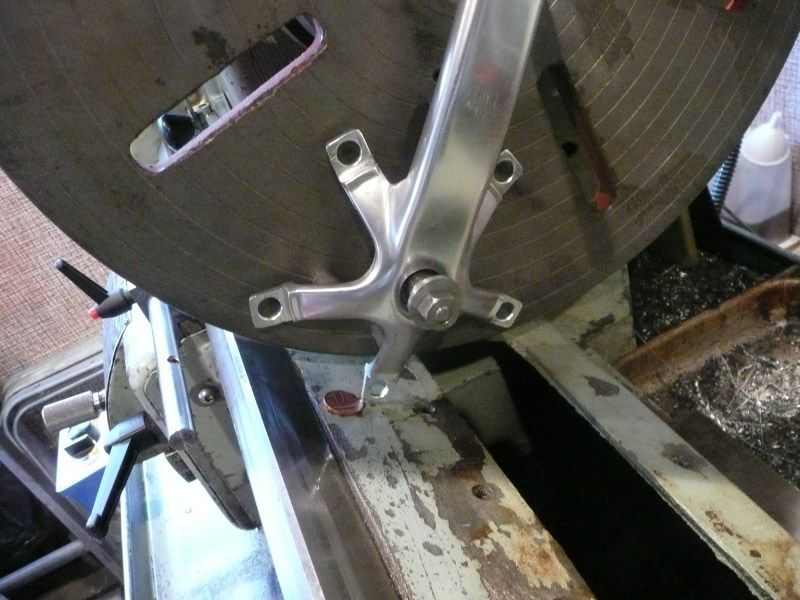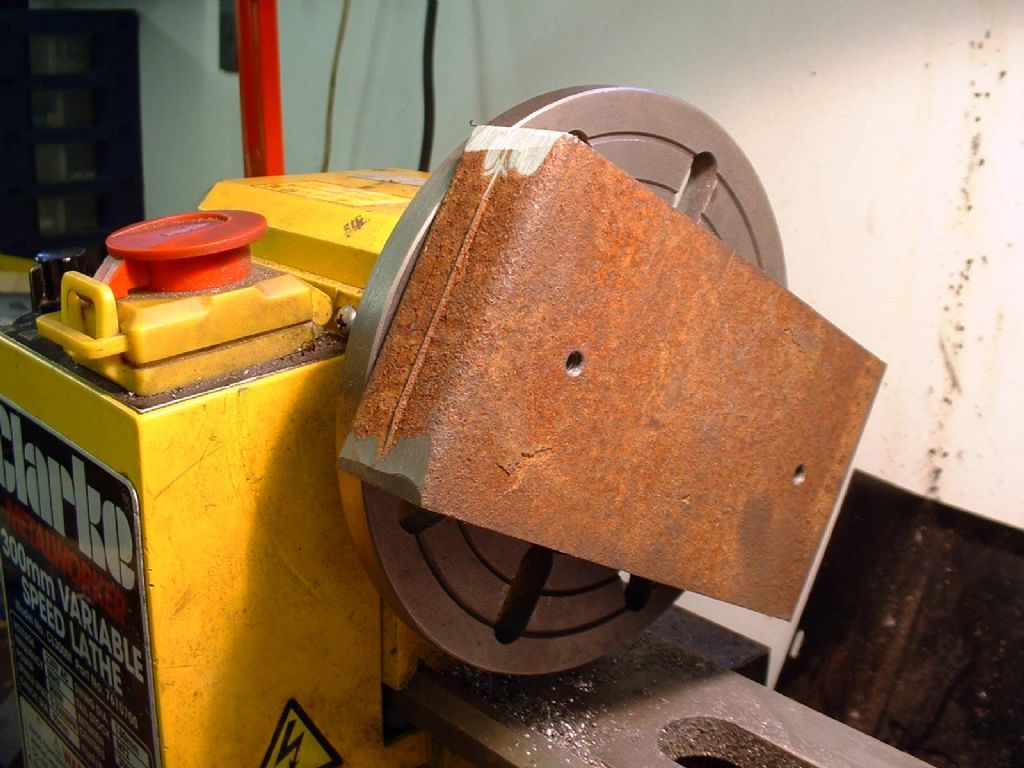Posted by MICHAEL WILLIAMS on 06/03/2014 12:27:14:
Have to agree with Bazyle about the merits of a bit of ingenuity and improvisation .
In the real world of engineering large size flywheels were sometimes turned true without any lathe at all .
They were mounted on a section of dummy crankshaft running in two plummer blocks and with temporary flat belt drive .
The turning slides were just bolted down to anything handy and moved around as nescessary .
…
There is an article by Bob Pickles in a 60's ME about how he made some almost perfect mill engines .
On one of these he only had occassional use of a big lathe and made most parts including all the spoke segments of the flywheel just using a file .
MikeW
Edited By MICHAEL WILLIAMS on 06/03/2014 12:32:08
No "were" about it. Full sized power station steam turbine rotors weighing 80 tons are machined today by much the same method when doing a blade change or rebuild etc. Set between centres on trestles and driven by an electric motor and machined with slides bolted to the deck. Onsite machining, it's "the latest thing" doing away with the "old" way of sending the 80 ton rotor to the manufacturers works in another city to be machined in a rather large lathe.
In the home workshop, perhaps a too-large flywheel casting could be drilled and reamed or even bored in a good drill press. And a good sized drill press could be pressed (ow, skuse the pun) into service as a vertical lathe by putting the flywheel on its shaft, gripping shaft in drill chuck and bolting the top slide off your lathe to the drill press table by means of angle brakcets etc. Bottom of the flywheel's shaft could be located on a centre or even a bearing attached to the table. Vertical lathe was the way most machine shops did their large diameter flywheels in t'old days and if you google them, you can see some of them were a pretty crude machine but got the job done.
Depth of cut on the home drillpress vertical lathe could be controlled by loosening the mountings and tapping the slide inwards a tad at a time. I've seen a lathe in a steel mill turning giant rollers 6 foot diameter with a toolbit clamped straight to the carriage and depth of cut controlled by loosening the tool clamp and whacking the 1-inch square toolbit with hammer to nudge it in to take a new cut. Just got to get back to basics.
And the day was when every apprentice were taught to file a block of steel straight, flat and square, which enables you to make just about anything — given enough time!! — from solid stock.
But I should think that a 10" flywheel could be made in a small lathe by turning the hub and spokes in the normal manner, inserting the spokes into holes drilled in the hub then cutting the rim out of stock and filing it to final shape – or get the local engineering works to cut a circle of plate with their plasma cutter and finish it off with an angle grinder and file. Cut it into segments, drill for the spokes, assemble and join the segments with concealable bolting plates, welding .
Hopper.








